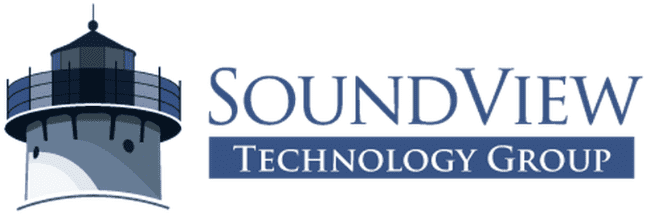Type Active Founded 1977 | ||
 | ||
Parent organization Charles Schwab Corporation | ||
Soundview Technology Group (formerly NASDAQ:SNDV) was an American technology-focused securities and investment banking firm known primarily for its equity research on technology and other growth oriented companies. The company was acquired by Charles Schwab in 2003.
Contents
Soundview was unique in that it combined accepted Wall Street research and distribution methods, with the intimate (albeit "arms length") relationship with Gartner analysts, and arguably became the leading technology research boutique on Wall Street.
SoundView was based in Old Greenwich, Connecticut.
History
In 1977, Gideon Gartner initiated a financial service for Gartner Group via a partnership with Dillon, Read & Co., which distributed its reports and personal services to Dillon, Read & Co. investment client organizations. Gartner Group severed the Dillon Read relationship and became an independent broker-dealer in 1984, Gartner Securities Corp.
Gartner Securities was spun off to its shareholders just before its first public offering in 1986, providing analysis, investment advice and investment banking services, to institutional investors. The firm changed its name in 1988 to Soundview Technology, when Gartner was acquired by Saatchi & Saatchi.
From 1988 to 1991 the firm remained a small focused brokerage operation with the bulk of their clients being small institutions and hedge funds.
Expansion
In 1991 the firm hired a senior investment banking executive, Brian Bristol, to begin to build an investment banking practice. Additional analysts were added to grow coverage as the technology sector continued to perform well. By the mid-1990s SoundView was winning mandates as the "research co-manager of choice" on many technology IPOs and secondaries.
During this time trading and sales operations were expanded and upgraded. The client focus shifted from smaller institutional investors to larger "tier 1" firms. The combination of larger institutional clients and an expanding investment banking business provided SoundView with accelerating revenue growth and expanding margins.
Heyday
From 1997 to 1999 SoundView enjoyed a heyday as the best technology stock research boutique due in no small part to their exclusive relationship with Gartner Group (which was supplemented by another less exclusive but useful agreement with Forrester Research.) In addition to having access to all the research and research analysts SoundView also pioneered the use of technology end-user surveys to great effect. The annual SoundView/Gartner IT spending survey was for years the largest and most conclusive technology spending predictor in the market.
SoundView was early on several large technology trends including optical networking and software. These research-driven initiatives led to strong franchises that combined both high volumes of stock trading and better positions and economics in investment banking transactions.
Acquisitions
SoundView's success along with the culmination of what turned out to be a great technology valuation bubble attracted suitors. In late 1999 the agreement with Wit Capital (described below) was struck. The deal closed just months before the technology stock market unravelled in April 2000.
The new "Wit SoundView" was all of a sudden a public company unfortunately without the benefit of hindsight it took time to realize that the technology market would not be coming back soon. New management insisted on expansion to justify their acquisition.
Exacerbating what would be major overcapacity Wit SoundView acquired the E*Offering business unit of E*Trade in May 2000 to further expand into technology investment banking. This acquisition not only added a substantial number of new staff but also more offices in San Francisco and London.
Rounds of layoffs and a disintegration of the SoundView culture and values characterized the period from 2001-2003. During this time the majority of the original and talented SoundView partners and staff left for other pursuits.
Despite numerous efforts there was little left to grow from and what was left of the firm was sold (again) in 2003 to Charles Schwab. It's worth noting that a small firm (number just over 50 people in 1995) was able to garner $665M in value even with rapidly eroding market and company condition after 2000.
In 2011 the SoundView trademarks were acquired by one of the SoundView partners to begin building a new SoundView Technology Group to restore research-driven investment related services to emerging technology companies.
Merger with Wit Capital
At the peak of the dot-com bubble in early 2000, SoundView merged with Wit Capital (formerly Nasdaq:WITC) to form Wit SoundView in a $320 million all-stock transaction. Wit Capital had been founded just a few years earlier, in 1996, by Andrew Klein. Wit positioned itself as an online investment banking firm focused exclusively on the Internet and technology sectors. Wit had pioneered several bubble-era innovations in investment banking including a first-come, first-served approach to public offerings. Wit had been backed by Goldman Sachs, which sold its stake in 2001.
Sale to Charles Schwab
On November 19, 2003, Charles Schwab announced the acquisition of SoundView for $15.50 per share, or approximately $345 million. The acquisition was intended to integrate SoundView's equity research content with Charles Schwab's trading execution capabilities. SoundView received a 57% premium to its market price before the announcement.
